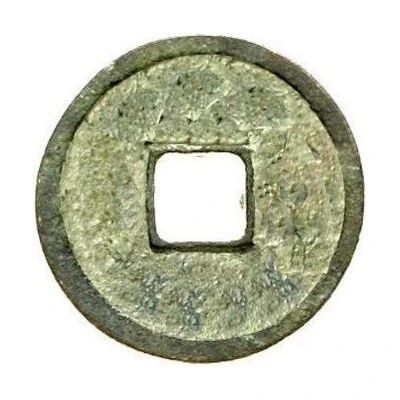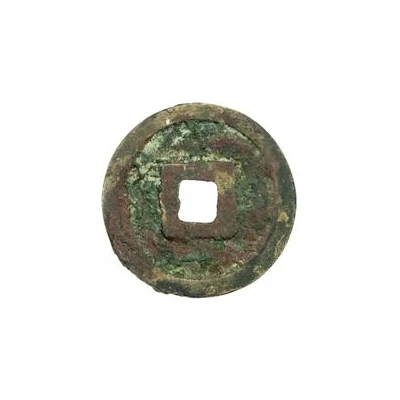


© Stephen Album Rare Coins
Fractional cash - Zhizheng Muqing Tongbao; temple coin ND
| Bronze | 2.50 g | 19 mm |
| Issuer | Empire of China |
|---|---|
| Emperor | Yuan dynasty › Ukhaghatu Khan "Huizong" (元惠宗) (1333-1368) |
| Type | Token |
| Years | 1341-1368 |
| Value | Fractional cash (½) |
| Currency | Cash (621-1912) |
| Composition | Bronze |
| Weight | 2.50 g |
| Diameter | 19 mm |
| Shape | Round with a square hole |
| Technique | Cast |
| Orientation | Medal alignment ↑↑ |
| Demonetized | Yes |
| Updated | 2024-10-04 |
| Numista | N#221674 |
|---|---|
| Rarity index | 100% |
Reverse
One Chinese ideogram above and one below.
Script: Chinese (traditional, regular script)
Lettering:
至
正
Translation:
Zhi Zheng
Zhizheng (4th era of Toghon Temür, 1341-1368)
Edge
Plain
Comment
Mu Qing is a hall in a temple in Peking, so the obverse could refer to where this type was cast.During the Yuan dynasty, there was a preference for paper money and silver ingots, making actual coins scarce or rare. However, the Yuan dynasty emperors supported Buddhism, and allowed temples to cast their own statues and artifacts. These temple coins were originally cast as offerings to Buddha, but due to their metal content, they still had an intrinsic value. While they were not official issues, these were widely accepted and used as small change in the markets.
With these not being official issues, there are different diameters and weights possible. The average weights seem to be around 1/2 Cash, but smaller and larger weights exist.
Interesting fact
One interesting fact about the Token Fractional cash - Zhizheng (Muqing Tongbao; temple coin) ND (1341-1368) from Empire of China made of Bronze weighing 2.50 g is that it was used as a form of currency during the Mongol Empire's rule in China. The coin was issued by the imperial government and was used to pay taxes, debts, and other obligations. It was also used as a medium of exchange for goods and services. Despite being made of bronze, the coin was valued at a high level, reflecting the strong economy and trade networks of the Mongol Empire during that time.



